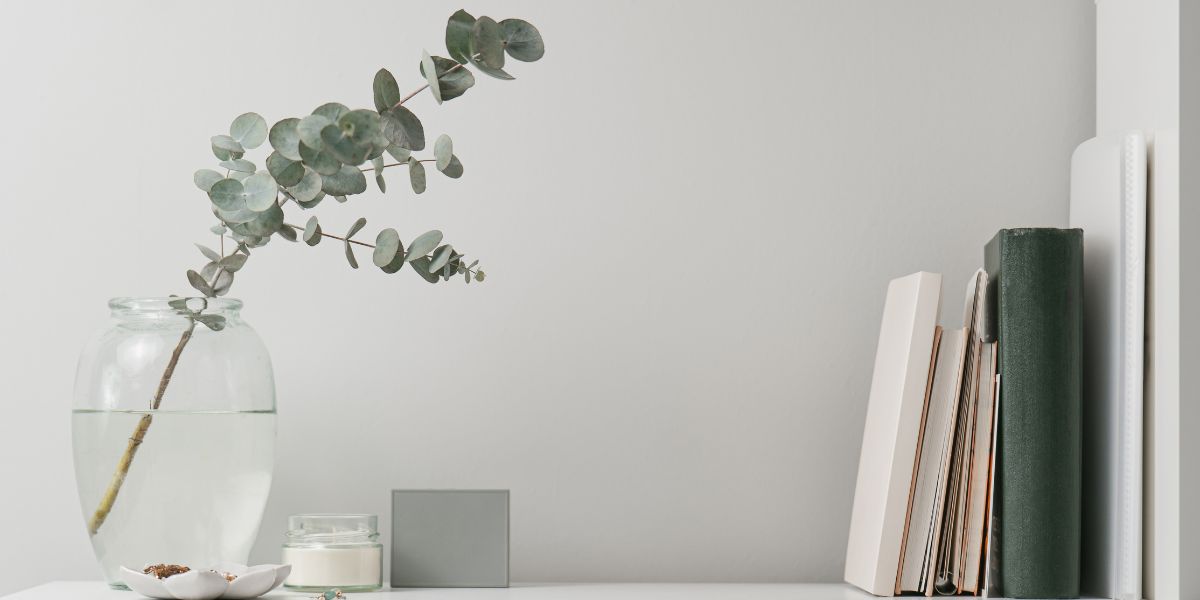Fall back in love with your home by creating a happy household mindset so you and your family can live calmly and joyfully.
An organised and tranquil home isn’t just a matter of tidy rooms and neatly arranged belongings – it begins with the right mindset.
Cultivating a happy household mindset is key to creating – and maintaining – a home that truly is your sanctuary.
What is a household mindset?
We’re all familiar with the terms positive mindset, growth mindset and money mindset but what about household mindset?
Household mindset refers to the overall attitude, beliefs, and values that guide the behaviour and decision-making within a household. It’s how the individuals in your household think about and approach various aspects of the home and family life.
This mindset can include factors such as cleanliness, organisation, money management, sustainability, and prioritising the well-being and happiness of family members.
It influences how time is spent, how household tasks are divided, how belongings are stored, and how the overall environment and atmosphere of the home are set up and maintained.
What constitutes a “happy household mindset” can vary greatly from one household to another, depending on a variety of factors relating directly to the people who live there.
With all that in mind, follow these 5 practical tips to create a serene haven for you and your family.
The power of gratitude and positive thinking
In the hustle and bustle of everyday life, maintaining a positive mindset can be transformative.
Making a conscious effort to approach each day with gratitude and optimism can help you navigate any challenges that come your way.
Consider keeping a simple gratitude journal, noting three things you’re thankful for each day. Or why not create a positivity corner, pin board or vision board in your home—a space adorned with uplifting quotes and affirmations or images and photos to serve as a daily reminder of the good in your life and your hopes and dreams for the future.
If you use Pinterest, you could also create a specific board for home positivity inspiration there!
A few affirmation ideas
I’m grateful for my safe home.
I deserve to live in a clean and tidy home.
My home is my sanctuary.
My home is calm and happy.
I’m proud of my home.
There are many psychological benefits of positive thinking. Research suggests that a positive mindset can reduce stress, enhance overall well-being, and even boost the immune system.
Positivity has a profound impact on household dynamics too, creating a more nurturing environment for all family members.
When positivity is present, it fosters open communication, trust, and empathy among family members. It encourages individuals to focus on the strengths and accomplishments of each other, rather than dwelling on faults or shortcomings. This creates a supportive atmosphere that strengthens the bond between family members, reduces conflict and tension and promotes a sense of understanding and cooperation.
Mindful Decluttering
Take a mindful approach to decluttering your living space. Begin by assessing each room and identifying items that no longer serve a purpose or bring joy. Letting go of the unnecessary allows energy to flow freely, creating a sense of space, openness and calm. Donate, recycle, or repurpose items to give them a new life elsewhere.
The Konmari Method
The Konmari method, developed by Marie Kondo, is a popular approach to tidying and organising your living space that you may want to explore.
I’m a fan of this method and have used it successfully in my own home and in my work with clients. The key aspects of Marie’s method revolve around decluttering and organising belongings in a systematic and mindful manner.
The first step is to commit to tidying up and envisioning the ideal living environment. The next step is to tackle categories of items rather than specific rooms, starting with clothing, then moving on to books, papers, miscellaneous items, and sentimental items.
The Konmari method emphasises keeping only those items that spark joy and discarding the rest. The process involves physically handling each item and asking yourself if it brings joy.
Once the discarding phase is complete, the final step is to organise the remaining items in a way that is both functional and aesthetically pleasing.
By following the Konmari method, you can create a clutter-free and harmonious living space that aligns with your personal values and brings you joy.
You can explore the Konmari method more fully in the book “The Life-Changing Magic of Tidying Up” by Marie Kondo.
And you can read my own Marie Kondo story HERE.
The Emotional Aspect of Decluttering
Decluttering can evoke a range of emotions, as it involves letting go of possessions that hold sentimental value or memories.
It can be a difficult process, as you sift through items that have accumulated over the years, reminiscing about the past. There may be a sense of nostalgia, as certain objects bring back cherished moments or loved ones who are no longer present.
At the same time, decluttering can also bring about feelings of liberation and relief. By removing physical clutter, you may find yourself shedding emotional weight as well, creating space for new beginnings and a sense of clarity.
It is a process that requires both mental and emotional strength, as you make decisions about what truly matters. Ultimately, the emotional aspect of decluttering offers an opportunity for personal growth and a fresh perspective on what truly brings joy and meaning to your life.
Setting Intentions for Your Home
It’s important to have deliberate intentions for your living space.
Whether it’s fostering a more welcoming hallway, a home spa in the bathroom or creating a bedroom retreat, setting specific goals can guide your organising efforts.
Write down your intentions and organise them into a list of priorities you can work through. Revisit them throughout the year to stay focused on creating the home environment you desire.
Setting intentions is a powerful practice that can have a profound impact on your household mindset. By consciously determining the direction and purpose of your thoughts and actions, you can focus your energy and attention on what truly matters to you, creating a sense of clarity and purpose. By setting intentions, you’re shaping your reality and create the life you envision, leading to a greater sense of fulfilment and happiness.
Embracing Minimalism
In a world filled with constant stimuli, embracing minimalism can bring about a sense of calm.
Do not fear the idea of minimalism. It can sound scary if you’ve seen minimalism being portrayed in the media with images of empty, bare rooms with nothing but a chair and a bed! I get it, I think they are scary too! But I also know that’s not what minimalism needs to be.
Minimalism is different for everyone.
“Minimalism is the intentional promotion of the things we most value and the removal of anything that distracts us from it.”
Joshua Becker
Consider simplifying your living space by decluttering surfaces and embracing a less-is-more philosophy. By letting go of excess possessions, commitments, and distractions, you become more conscious of your choices.
Minimalism encourages you to make deliberate decisions about how you spend your time, energy, and resources and create space for the things that truly matter. Opt for quality over quantity in your decor and belongings to create a serene atmosphere that encourages relaxation.
One practical tip is to start by looking at each item and ask yourself if it serves a purpose or brings you joy. If not, consider donating or selling it.
Another tip is to adopt a capsule wardrobe, which consists of a limited number of versatile and timeless pieces. This helps reduce decision fatigue and makes getting dressed easier.
Additionally, try to resist the urge to constantly acquire more things and instead focus on experiences and relationships.
Embracing minimalism, consuming less and choosing sustainable options will have numerous benefits for both you and the planet and can lead to cost savings and improved personal well-being. It encourages a more mindful and intentional approach to consumption, promoting a simpler and less cluttered home and lifestyle. Ultimately, by making these choices, you can create a more sustainable and equitable world for yourself, your family and future generations.
Teamwork in Tidying Up
Fed up with messy bedrooms, socks on the floor and dishes that don’t quite make it into the dishwasher? Maintain a happy household by involving your family in the organisation process.
Try scheduling regular tidying sessions where each family member contributes to maintaining order both in their own personal spaces and communal areas. Transforming tidying up into a fun, collaborative effort not only lightens the load but also strengthens the bond within your family.
Delegate – you don’t need to do it all!
Age-appropriate tasks for children can vary depending on their developmental stage and abilities.
For younger children, simple tasks like picking up toys, setting the table, or helping with laundry can be suitable.
As they grow older, they can take on more responsibilities such as making their bed, helping with meal prep, or taking care of pets.
Involving children in household chores not only helps you but also fosters a sense of responsibility in them. By assigning age-appropriate tasks, children learn the importance of contributing to the family and taking care of their surroundings. It teaches them the value of hard work and instils a sense of pride and accomplishment when they complete their tasks.
One way of making it fun for young children to tidy up is to turn it into a game and play upbeat music to keep them motivated. Add a sense of friendly competition with older children by setting a timer and challenging them to see how quickly they can tidy.
Most importantly – don’t get overwhelmed with the process of decluttering and falling back in love with your home – remember that cultivating a happy household mindset is an ongoing journey.
By infusing positivity, practising mindful decluttering, being a conscious consumer, setting intentions, embracing minimalism, and promoting teamwork, you’re laying the foundation for a home filled with peace and tranquillity.

